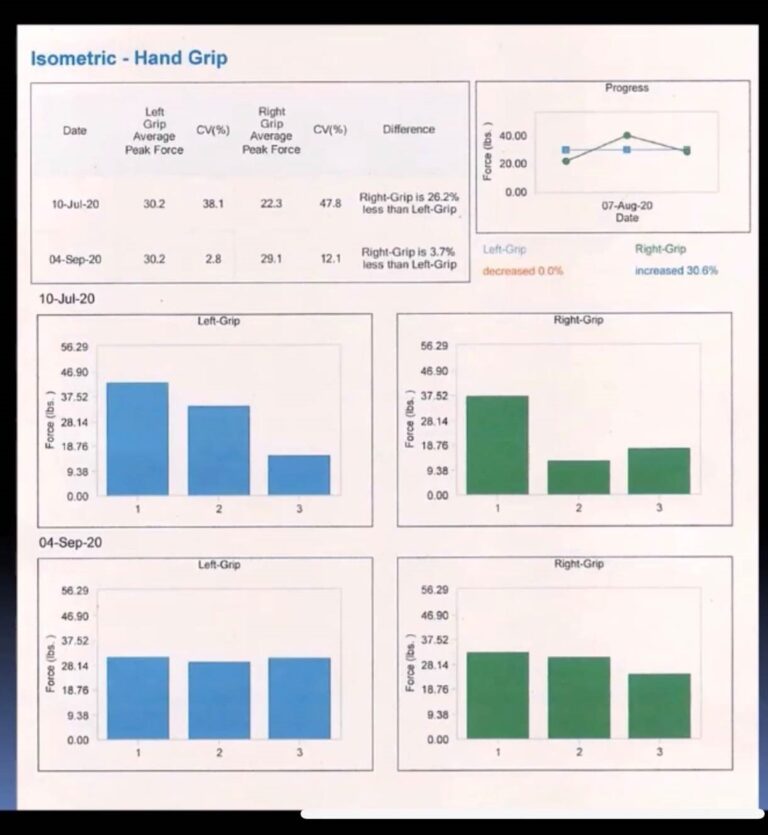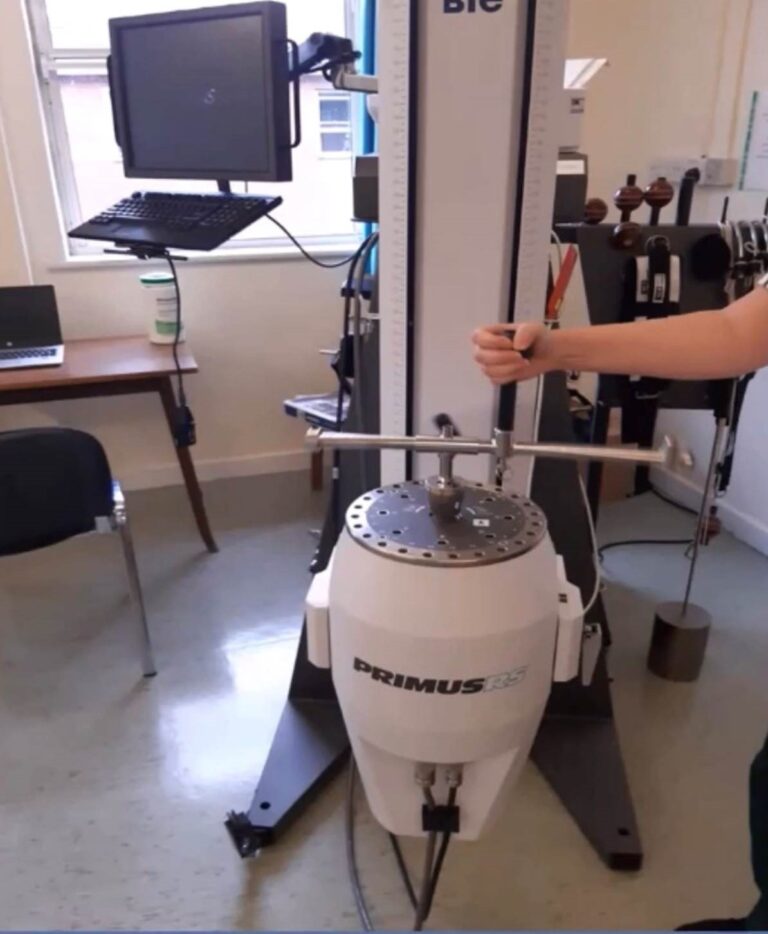Return to work for COVID-19 patients...
Sarah Holt and the Group Rehabilitation Team at London Road Community Hospital in Derby have been using the BTE Primus for over four years. They primarily use the Primus to support musculoskeletal patients in their return to work. They have formed a great income generating partnership with a large local manufacturer using the Primus to provide objective assessment of the employees' capacity to complete specific work tasks and functional capacity evaluations to support decisions around redeployment.
Since the pandemic has restricted the number of none essential appointments, the team have been using the Primus as part of their objective assessment and remote management of patients. The team have also developed and delivered a rehabilitation pathway for COVID-19 patients aiming to return to work. The impact of the disease can cause substantial long-term issues for the patient. The team's role is to enable the patient to be able to return to work safely and to reduce the chance of subsequent issues. The BTE PrimusRS is providing vital data to the clinical team, patient and employers to maximise the patients' recovery and enable them to successfully return to the workplace.
The primary function for Sarah’s team at London road community hospital is to manage the return to work for their patients. The pandemic has meant they have been referred people who have had COVID-19 and are aiming to return to work. The symptoms they have see could manifest itself as an ongoing physical deficit affecting their ability to return to their job or perform specific work tasks.
The rehabilitation team are now able to write ‘fit notes’ which were previously only able to be completed by GPs. These are a lot more comprehensive than GP fit notes as they incorporate specific return o work criteria. This has been a great development for everyone as the team are able to manage this more quickly and devise testing in conjunction with the employers meaning a comprehensive and suitable test.
.png?width=800&name=Untitled%20design%20(32).png)
The common problems COVID-19 patients have presented with are (this is an ever changing list…):
- Weakness
- Breathlessness
- Fatigue - single biggest issue
- Anxiety
- Rapid heart rate
- Joint pain
- Lower rib pain – this appears to be less common
- Headaches is a new complaint
There seems to be more ongoing issues with patients who haven’t had prolonged hospital admissions or been on ICU. Some patients had COVID-19 6 months ago wild ‘mild’ symptoms and are still not able to go back to work. ICU patients are progressing at an expected rate and with the doctors saying recovery pattern seems to be similar to standard pneumonia.. A lot of their patients are female hospital staff in their late 40s and 50s.
It is a big learning curve for them as they normally see MSK patients only.
Case study
- Female
- 52 year old
- Lives alone
- Diagnosed in April
- Works in hospital as a health care assistant
She was referred by a community physio and started rehab after two months. The main issues were:
- Ongoing breathlessness
- Limited walking tolerance and inability to walk and talk at same time
- High levels of fatigue, anxiety, anger and guilt. Angry with employer at putting her in situation and if this will have an impact on her life, and feeling guilty for not being able to return to work
- Weakness primarily upper limb, reporting difficulties with opening bottles and jars
Initial consultation is via telephone which was an hour and 20 mins which identified ongoing functional issues and task analysis of normal work role and potential difficulties. They initially gave some home exercises relating to functional deficit. They also provided an (electronic) AHP fit note with verbal and written information of fatigue management on COVID-19 specific recovery. They had discussions with respiratory services regarding breathlessness and advised her to self refer to psychological services. She was reluctant to do so but was very glad she did it in the end.
Work concerns
She had to do a lot of manual handling tasks including pushing wheelchairs, moving equipment, assisting with sit to stand transfers and positioning patients. Communication and social interaction were a key part of the job. Prolonged upper limb activity including operating a scanning machine in a winding motion.
The team decided it would be sensible to have a Covid specific group, this was for the contamination issue but also so they felt supported by the group. This includes cardiovascular exercise, upper limb strengthening work simulated activity, a session with a respiratory physio and techniques to manage this. They would normally have 15 in a group but are now restricted to 6 seeing 24 patients over the course of the day when this would normally be 70.
Outcome measures – BTE PrimusRS usage
The Primus plays an important role in being able to dose the patient with the correct resistance and functional tasks. It also provides critical data to be able to progress the patient where necessary. As performance does fluctuate a lot with these patients, it is very important to have the evidence and be able to communicate this with the patient.
Sarah was planning to have a standard evaluation for ever patient but they decided to adapt it to each patients requirements.
The results show that the condition really does fluctuate depending on how the patient is feeling.

Data showing fluctuation in Grip strength assess in sessions 1 to 3
They did a rehab session every time she came in on the movements that would help her to be as independent as possible both at home and in work. The tools they used were:
162 – grip
302 – jar
102 – bottle
181 – reach
181 - rolling patients
191 - push/pull
701 – short lever position 1- winding the scanner

701 – short lever position 1 – simulating winding the scanner
They also incorporated treadmill and balance training. Sessions lasted 60 minutes with 30 minutes for rehabilitation and 30 minutes for talking.
It is still in the early stages for how rehabilitation will move forward. Sarah’s team will certainly continue with some remote management of their patients on call and video communication. It is still very important to incorporate assessments to ensure that progress is being made.
Patient Update
"The lady in question commenced a phased return to work in December and has now increased to her normal hours and duties. We continued to use the Primus throughout her treatment with us. Having completed a workplace assessment it was good to see that using 701 on a short lever closely replicated use of the eye scanner, as I hoped that it would. She demonstrated an increase of over 400% on the Primus which allowed us to confidently allow her to use the scanner as soon as she was able to return to work. I continue to speak to her once a month, but all is well."
"We have now treated over 150 people with Covid and a good proportion of them have been Long Covid. In general, we find that flexible return to work plans, that doesn't increase too quickly, are the most successful. We are using the Primus for rehab and also for one off type assessments that gives us a baseline of function and strength. We send them off with exercises and advice and then reassess which has worked really well when we have limited capacity for face to face. We have also been running virtual sessions for exercise, advice and support."
Watch the full webinar below:
1:30 - 5:29 – Service provision
5:30 - 9:59 – Observations
10:00 - 22:44 – Case study
22:45 - 29:09 – Primus usage
29:10 - 55:00 – Questions
If you would like to find out more information about the technologies mentioned in this webinar then get in touch at info@physiquipe.com
